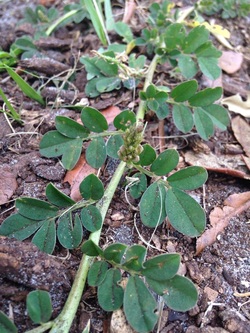The vine :
Creeping Indigo's vine-like runners fan out in all directions from one, central tap root. The can sprawl up to six feet in length. The stems and vines are pale green to yellow in color and woody in texture. The runners are not attached to the ground and you can lift them up then, continue to follow the vine until it goes into the ground- this is where you will find the tap root.
For a tutorial on how to identify CI in your pasture, watch our instructional video below!
For a tutorial on how to identify CI in your pasture, watch our instructional video below!

